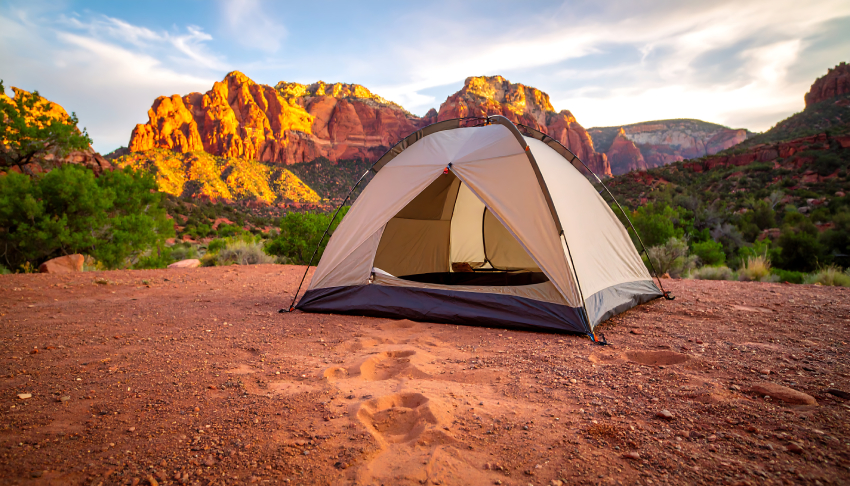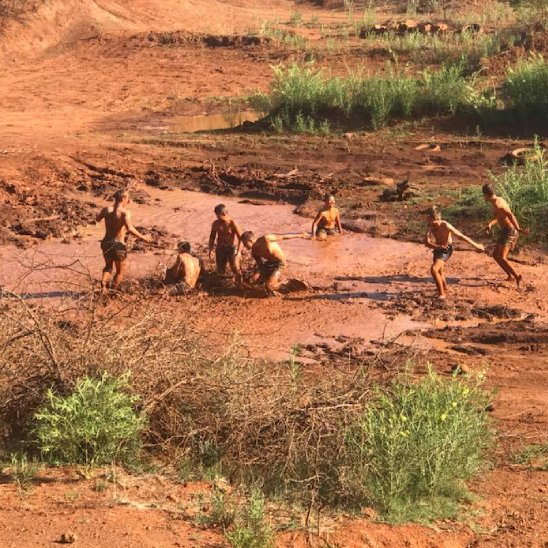What Is a Tent Footprint? When and Why Should You Use One?
Figuring out what a tent footprint is shouldn't require a PhD in outdoor gear, but the camping industry has turned this simple piece of fabric into a complex decision. Here's what most gear guides won't tell you: a tent footprint is a tarp that goes under your tent, and the debate about whether you need one has been manufactured by companies wanting to sell more stuff. Whether you're camping at our caravan park or planning adventures elsewhere, understanding tent footprints will save you from gear anxiety and potentially expensive tent repairs.
Do You Need a Footprint for a Tent?
The honest answer depends on where you're camping and how much you care about your tent's lifespan. Most modern tents are designed to work without footprints—manufacturers wouldn't sell tents requiring additional purchases to function properly.
Tent footprints primarily protect your tent floor from abrasion, punctures, and moisture. Sharp rocks, thorns, and rough ground can damage tent floors over time, especially on lightweight tents where manufacturers prioritise weight savings over durability. A footprint acts as a sacrificial layer, taking abuse instead of your expensive tent.
Weight and space trade-offs matter more for backpackers than car campers. Footprints add weight and bulk to your pack, which matters for long-distance hiking. Car campers can afford extra protection without worrying about pack weight.
When to Use a Tent Footprint
Rocky or abrasive surfaces justify footprint use more than any other camping condition because replacing punctured tent floors costs more than buying footprints. Sharp rocks, gravel, and rough concrete can damage tent floors quickly, especially during setup when dragging tents around.
Extended camping trips benefit from footprint protection because cumulative wear adds up over time. Weekend camping trips might not damage tent floors noticeably, but weeks of camping on various surfaces create wear patterns that eventually lead to leaks or tears.
Wet conditions make footprints more valuable for moisture protection, though proper campsite selection matters more than gear solutions. Expensive or lightweight tents justify footprint investment more than budget or heavy-duty models.
Having Tent Footprint vs. Tarp
Tent footprints are custom-sized tarps designed specifically for your tent model, while generic tarps are multipurpose covers serving similar functions. The camping industry wants you to believe custom footprints are essential, but tarps often work just as well for fractions of the cost.
Custom footprints fit your tent's exact dimensions and often include grommets or attachment points aligning with your tent's guy-out points. This precise fit prevents footprints from extending beyond tent edges, which can channel rainwater under tents during storms.
Generic tarps cost significantly less than custom footprints but require more thought about sizing and positioning. Tarps extending beyond the tent edges create water collection problems during rain. Proper tarp sizing means cutting slightly smaller than the tent floor dimensions.
Versatility favours tarps since they serve multiple camping functions beyond tent protection. Tarps work as ground covers, rain shelters, gear protection, and emergency shelters.
How to Choose a Tent Footprint
Size matching requires precision that most people underestimate when choosing footprints. Footprints should be slightly smaller than the tent floor dimensions to prevent water channelling during rain. Footprints extending beyond the tent edges create water collection problems, defeating their protective purpose.
Material considerations balance durability against weight and packability. Heavier materials like vinyl or thick polyethylene provide excellent protection but add significant weight. Lightweight materials like silnylon pack smaller but offer less puncture resistance.
Brand compatibility matters for custom footprints designed for specific tent models. Tent manufacturers often sell matching footprints, but third-party options frequently cost less while providing similar protection.
Book Your Stay and Skip the Gear Anxiety
Tent footprint decisions become simpler when camping at facilities designed for comfort rather than survival scenarios. Mbizi Game Lodge & Spa provides well-maintained camping sites, eliminating concerns about ground damage to tents. Whether you choose our caravan park with level sites or prefer other accommodation options, you can focus on enjoying bushveld experiences rather than obsessing over gear protection. Contact us to learn more about our facilities and book your worry-free camping adventure.














